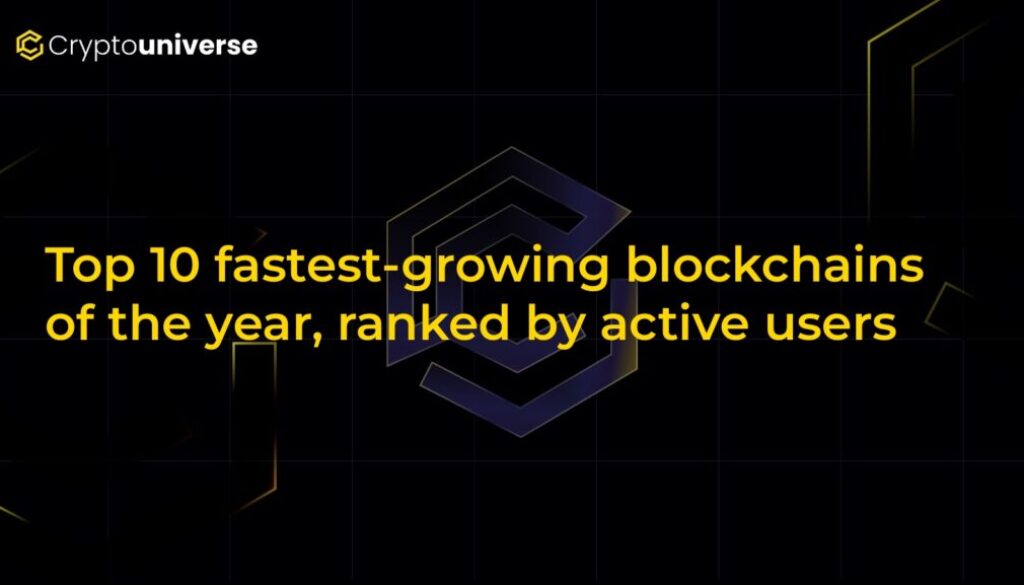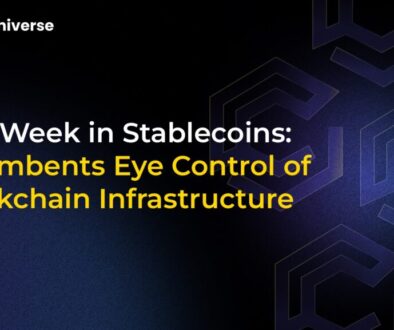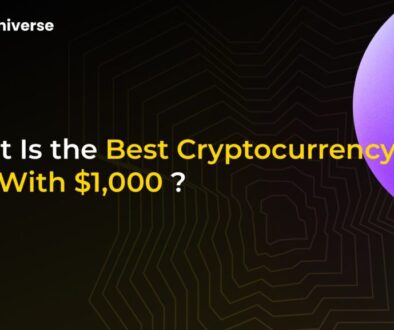Top 10 fastest-growing blockchains of the year, ranked by active users

Beyond the Hype: Which Blockchains Are Actually Gaining Users in 2025?
The blockchain landscape in 2025 is a battleground of innovation, where real-world utility has finally eclipsed speculative hype. From decentralized finance (DeFi) powerhouses to emerging gaming and AI-focused networks, the competition is fierce. But with countless projects vying for attention, which ones are truly capturing the market? The ultimate measure of success isn’t just market capitalization—it’s active users.
Real user engagement, measured by the number of unique wallet addresses making transactions, is the clearest indicator of a network’s health and adoption. This year, growth has been supercharged by thriving DeFi and NFT ecosystems, the widespread adoption of stablecoins, and a surge in institutional interest following the success of Bitcoin ETFs. In this comprehensive analysis, we unveil the
Understanding the Metrics: L1s, L2s, and Active Users
Before we dive into the list, let’s clarify a few key concepts:
- Layer 1 (L1): This is the foundational blockchain, like Bitcoin or Ethereum. It’s the main network that processes and finalizes transactions on its own infrastructure.
- Layer 2 (L2): This is a secondary protocol built on top of an L1 blockchain. Its goal is to improve scalability and reduce transaction costs. Polygon and Arbitrum are prime examples of L2s built on Ethereum.
- Active Users: For our ranking, an active user is defined as a unique wallet address that has completed at least one transaction within a month. This metric helps filter out inactive accounts and provides a clearer picture of genuine network activity.
The Top 10 Fastest-Growing Blockchains of 2025
Here are the networks leading the charge in user adoption, ranked by their monthly active users.
1. Solana (L1)
Solana has cemented its position as a high-speed leader, known for its Proof-of-History (PoH) consensus mechanism that enables lightning-fast and low-cost transactions.
- Monthly Active Users: 57 million
- 30-Day Token Trading Volume: $284.2 billion
- Key Growth Drivers: Its ecosystem is booming with DeFi applications, popular NFT marketplaces, and a frenzy of memecoin trading. The introduction of the Firedancer validator client has significantly improved network reliability, attracting more institutional interest.
- Challenges: Despite improvements, Solana’s reputation is still affected by past network outages. It also faces criticism regarding its degree of centralization and stiff competition from Ethereum’s L2 solutions.
Did you know? Solana can process thousands of transactions per second, making it a favorite for high-frequency activities like trading and minting NFTs.
2. Near Protocol (L1)
Near Protocol is carving out a unique niche by focusing on developer-friendly tools, user accessibility, and the integration of AI-native features.
- Monthly Active Users: 51.2 million
- 30-Day Token Trading Volume: $7.8 million
- Key Growth Drivers: Near’s focus on AI for user-owned agents is a major draw. Its carbon-neutral status, low fees, and strategic partnerships, like with EigenLayer for faster finality, have fueled its expansion in DeFi and gaming.
- Challenges: The network faces intense competition from other high-speed L1s and L2s. Its complex sharding technology, while powerful, could also introduce potential vulnerabilities.
3. BNB Chain (L1)
Backed by the world’s largest crypto exchange, Binance, the BNB Chain offers an EVM-compatible environment for a vast array of DApps.
- Monthly Active Users: 46.4 million
- 30-Day Token Trading Volume: $56.1 billion
- Key Growth Drivers: Recent upgrades have reduced block times, making the network faster. The integration of AI-powered tools for data ownership is also attracting new projects and users.
- Challenges: Its close ties to Binance raise concerns about centralization. The network and its parent company also operate under significant regulatory scrutiny worldwide.
4. Base (L2)
Developed by Coinbase, Base is an Ethereum L2 solution that leverages optimistic rollups to offer a secure, low-cost platform for on-chain applications.
- Monthly Active Users: 21.5 million
- Key Growth Drivers: Base’s biggest advantage is its seamless integration with Coinbase, providing direct access to over 100 million potential users. Its ultra-low fees (averaging $0.01) have made it a hub for consumer DApps and stablecoin activity.
- Challenges: As a newer ecosystem, it faces periodic network congestion during high-activity periods and must navigate the complex regulatory landscape while relying on Ethereum for its core security.
5. Tron (L1)
Tron is a high-throughput blockchain that has become a dominant force in low-cost stablecoin transactions, particularly through its integration with platforms like Telegram.
- Monthly Active Users: 14.4 million
- 30-Day Token Trading Volume: $51.7 billion
- Key Growth Drivers: Negligible transaction fees make it ideal for frequent, small-value transfers. Its ongoing push into AI and cross-chain integrations continues to expand its utility.
- Challenges: Like BNB Chain, Tron faces persistent centralization concerns and has been the subject of intense regulatory scrutiny in various jurisdictions.
6. Bitcoin (L1)
The original cryptocurrency, Bitcoin continues to prove its resilience and growing appeal as a store of value, often called “digital gold.”
- Monthly Active Users: 10.8 million
- 30-Day Token Trading Volume: $1.3 trillion
- Key Growth Drivers: The approval of spot Bitcoin ETFs has unlocked a torrent of institutional investment, with billions flowing into the asset. The recent halving event, which reduced new supply, has further reinforced its scarcity and appeal as a strategic reserve.
- Challenges: Bitcoin’s Proof-of-Work consensus mechanism is energy-intensive, drawing environmental criticism. Its price remains volatile and heavily influenced by macroeconomic factors.
7. Aptos (L1)
Built by former Meta engineers, Aptos is an L1 blockchain designed for scalability and security, utilizing the innovative Move programming language.
- Monthly Active Users: 10 million
- 30-Day Token Trading Volume: $13 billion
- Key Growth Drivers: The network has demonstrated impressive performance, with a peak throughput of 19,200 transactions per second (TPS). The Move language offers enhanced security for smart contracts, and key partnerships, like the launch of Tether (USDT), are boosting liquidity.
- Challenges: As a relatively new player, Aptos needs to achieve broader DApp adoption to compete effectively with more established L1s.
8. Ethereum (L1)
Ethereum remains the undisputed king of smart contracts, hosting the largest ecosystem of DeFi, NFTs, and developers in the crypto world.
- Monthly Active Users: 9.6 million
- 30-Day Token Trading Volume: $1.1 trillion
- Key Growth Drivers: The upcoming Pectra upgrade promises to enhance user experience and scalability. The potential approval of Ether ETFs could mirror Bitcoin’s success, bringing in massive institutional capital and staking activity.
- Challenges: Despite upgrades, Ethereum still struggles with higher gas fees and slower transaction times compared to its rivals. It also faces constant regulatory pressure and competition from its own L2 scaling solutions.
9. Polygon (L2)
Polygon is a leading multichain scaling solution for Ethereum, providing a framework for building and connecting Ethereum-compatible blockchain networks.
- Monthly Active Users: 7.2 million
- 30-Day Token Trading Volume: $4.2 billion
- Key Growth Drivers: Continuous upgrades like Heimdall v2 are improving interoperability, solidifying its role as a “Swiss Army knife” for scaling. It has also secured major partnerships with Fortune 500 companies looking to enter the Web3 space.
- Challenges: Polygon faces increasing competition from other L2s and must navigate new European regulations like MiCA (Markets in Crypto-Assets).
10. Arbitrum One (L2)
Arbitrum One is a top-tier Ethereum L2 that uses optimistic rollups to deliver faster and cheaper transactions while inheriting the security of the Ethereum mainnet.
- Monthly Active Users: 4 million
- 30-Day Token Trading Volume: $14.3 billion
- Key Growth Drivers: Major integrations, such as with Robinhood for tokenized assets, are bringing mainstream users into its ecosystem. The Stylus upgrade is set to lower fees even further, making it more competitive.
- Challenges: Its growth is dependent on the health of the Ethereum network. It also faces direct competition from other optimistic rollups like Optimism and operates in a climate of regulatory uncertainty.
Trends Powering the Growth of Top Blockchains
The rise of these networks isn’t happening in a vacuum. Several powerful trends are fueling this industry-wide acceleration:
- Layer 2 Dominance: L2 solutions like Base and Arbitrum are making Ethereum usable for everyday applications by slashing fees and increasing transaction speeds.
- DeFi and NFT Gravity: Innovative DeFi protocols and vibrant NFT marketplaces remain the primary magnets for attracting millions of new users to these ecosystems.
- Mainstream Integrations: By connecting with major platforms like Coinbase and Robinhood, blockchains are finally breaking out of their crypto-native bubble.
- Institutional Validation: The flood of capital into Bitcoin ETFs and corporate partnerships are lending unprecedented credibility and stability to the market.
Conclusion: The Road Ahead
The story of 2025 is clear: blockchain adoption is accelerating, driven by networks that offer tangible value through low fees, engaging applications, and seamless user experiences. Chains like Solana, Near, and the cohort of Ethereum L2s are leading the pack by demonstrating that blockchain technology can solve real-world problems at scale.
However, significant hurdles remain. Inflated user metrics from bot activity, the constant trade-off between speed and decentralization, and an ever-present regulatory cloud continue to challenge the industry. The networks that will sustain their growth will be those that innovate relentlessly, prioritize genuine user needs, and successfully navigate the complex path to mainstream acceptance.


